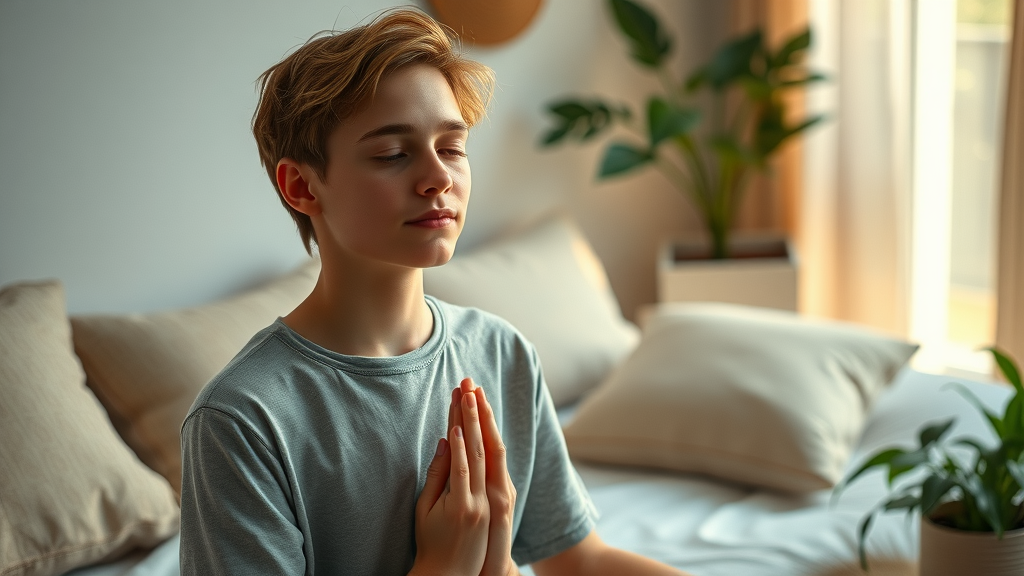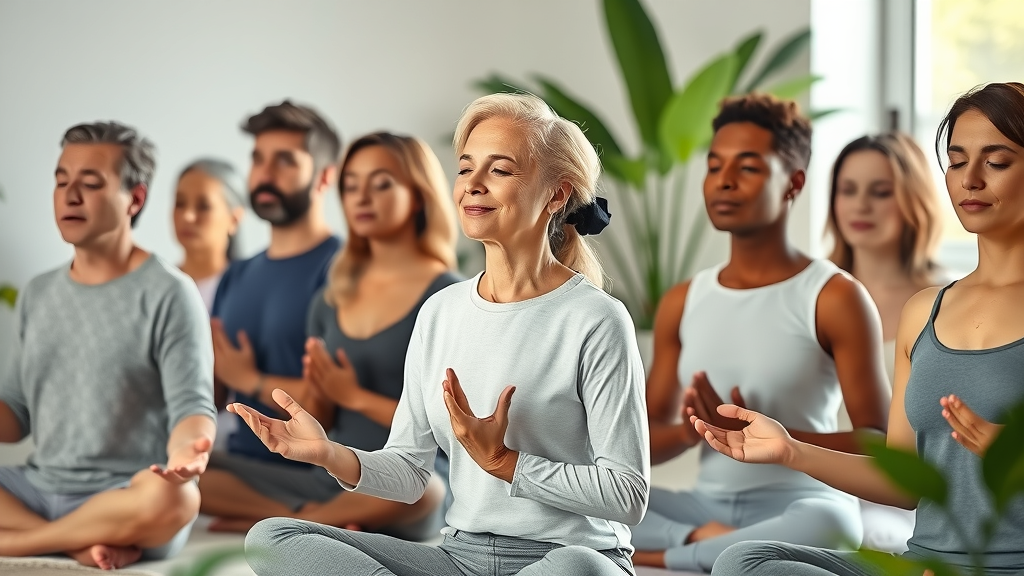Did you know nearly two-thirds of people with a mental health condition never seek help—largely because of stigma and discrimination? As mental health challenges quietly affect millions of people around us, the persistent shadows of health stigma and negative attitudes cast a long, isolating silence. Your voice in this conversation isn't just wanted—it's needed. In a world where stigma weighs as heavily as any illness, choosing to speak up, support, and learn can ignite a ripple of hope and change. This article will guide you through the roots and realities of mental health stigma, why breaking the cycle matters, and how you—yes, you—can make a real difference.

"Nearly two-thirds of people with a mental health condition never seek help—largely because of stigma and discrimination."—World Health Organization
Understanding Mental Health Stigma and Its Deep-Rooted Impact
Mental health stigma is much more than a collection of outdated ideas. It's a powerful force that shapes the lives of people with mental illness every day, leading to discrimination, lost opportunities, and silently perpetuating pain. When society clings to negative or inaccurate beliefs about mental health, individuals struggling with mental health issues often face more than just their condition—they battle the constant threat of judgment, misunderstanding, and exclusion. People with mental illness are often left feeling isolated, powerless, and reluctant to seek care, deepening the cycle further.
Real-life examples are everywhere—someone hiding their anxiety at work for fear of being labeled “unstable,” or a student with depression avoiding support because they worry about gossip. Stigma and discrimination can be subtle, like dismissive jokes, or overt, like exclusion from health care or workplace opportunities. The burden doesn’t just rest on the shoulders of those with mental health conditions; it also blocks society as a whole from truly understanding and addressing one of today’s most pressing health issues.
Defining Mental Health Stigma: What It Really Means for People with Mental Illness

At its core, mental health stigma refers to the negative attitudes and beliefs that society—or individuals—hold toward people with mental illness. It operates on several levels: public stigma (how the world sees people with mental health challenges), self-stigma (how individuals internalize those views), and institutional stigma (discriminatory policies or lack of support within systems). For the person affected, this means potentially being seen as less capable, less trustworthy, or even dangerous—a profoundly unfair and damaging lens.
The everyday realities for people living with mental health conditions might include hesitating to access health care, fearing job loss, or even facing social stigma from loved ones. The stigma of mental illness is not just an abstract concept—it is a daily obstacle that can prevent people from seeking support and can erode their sense of worth. Ultimately, reducing stigma benefits everyone, creating a world where mental health is treated with the same respect and seriousness as physical health.
How Mental Health Stigma Fuels Discrimination and Social Isolation
- Public Stigma: Misconceptions Society Holds about Mental Illness
- Self-Stigma: Internalizing Negative Perceptions
- Institutional Stigma: Discriminatory Policies Against People with Mental Illness

When people adopt society’s negative perceptions about mental health, intentional or not, they contribute to harmful cycles of discrimination and social isolation . Public stigma manifests as negative attitudes, harmful stereotypes, and even avoidance by colleagues, friends, or family. This often leaves people experiencing mental health challenges hesitant to participate fully in work, school, or social life for fear of being judged or ostracized.
Self-stigma occurs when those with mental health conditions internalize these negative messages, leading to lowered self-esteem, self-blame, and increased mental and emotional distress. Institutional stigma further complicates the picture, with policies that limit access to mental health services, leave gaps in health care coverage, or tolerate discrimination in hiring, education, and housing. Addressing all forms of health stigma is critical if we want to open doors to health services and build truly inclusive communities.
The Harmful Truth: Stigma and Discrimination Against People with Mental Illness
Social Isolation and Its Effects on Mental Health
Social isolation is one of the most painful consequences of mental health stigma. For people living with mental health issues , this isolation doesn't just mean fewer friends or fewer invitations—it can deteriorate a person’s health, make recovery tougher, and even lead to secondary mental health challenges like anxiety or depression. People with mental illness may withdraw as a form of self-protection or may be excluded by others out of misunderstanding or fear.
Most do not realize that such seclusion has measurable impacts, including increased stress, poorer health outcomes, and delay or refusal to access mental health services. The toll on self-worth and hope can be immense, amplifying the symptoms and setbacks from the original mental health disorder .
Barriers to Care: How Health Stigma Blocks Access to Treatment

Despite medical advancements and public awareness campaigns, stigma and discrimination still create barriers to mental health care. Many people fear judgment or exposure if they seek the support they need and might delay or avoid seeking care altogether. Others might encounter direct obstacles—such as lack of insurance coverage for mental health services or long waiting lists caused by undervaluing mental health as a true health issue.
This blocks not only those living with mental health conditions but also their families and the entire support ecosystem, reducing the effectiveness of overall health services. Tackling these barriers is crucial if we want to create a culture where everyone can receive the care they deserve, free from shame or fear.
Why People with Mental Health Conditions Often Remain Silent
"Stigma and discrimination are as much a threat to mental health as the illness itself."
Many individuals with a mental health condition choose silence over disclosure—sometimes for years. This decision is often rooted in the fear of negative reactions, job loss, or being defined by their diagnosis. The stigma of mental health is deeply ingrained, not just in society, but in the self-perception of those living with these conditions.
This silence can be devastating. It reinforces social isolation, increases emotional distress, and further discourages seeking help or participating in opportunities for recovery. Breaking this cycle requires collective effort to create environments—at home, at work, and in communities—where vulnerability is met with compassion, not judgment.
| Type of Stigma | Example | Consequence |
|---|---|---|
| Public | Media Stereotyping | Social Exclusion |
| Self-Stigma | Shame Over Seeking Help | Lowered Self-Esteem |
| Institutional | Lack of Insurance Coverage | Reduced Access to Care |
Where Mental Health Stigma Comes From: Myths, Media, and Misinformation
Popular Misconceptions About Mental Illness in Society

Despite growing awareness, many misconceptions about mental illness still dominate societal thinking. Stigma include beliefs that mental illness is a character flaw, a sign of weakness, or something a person could “just snap out of.” Others may think mental health conditions are rare, or associate them solely with extreme behaviors or violence—perspectives often amplified by sensationalist news stories or entertainment.
These pervasive myths are not only incorrect, but they actively harm people with mental illness by promoting fear, misunderstanding, and social distancing. Education and exposure to real stories are among the most effective tools we have to challenge these dangerous assumptions and reduce stigma on a broad scale.
The Media's Role in Health Stigma and Discrimination
- Top 5 Media Stereotypes Impacting Mental Health: The “dangerous unpredictable” trope, portraying mental illness as incurable, associating violence with mental health, trivializing mental health struggles, and framing recovery as impossible
- Pervasive Myths That Harm People with Mental Illness: Believing only adults are affected, treating medication as a cure-all, assuming talking about suicide is dangerous, seeing mental illness as a personal failing, or depicting therapy as embarrassing
Media narratives shape the public’s understanding of mental health for better or worse. When television shows, headlines, or movies highlight sensationalized or negative depictions, it feeds public stigma and makes the journey harder for those affected. On the flip side, accurate, compassionate storytelling—centered on recovery and hope—can inspire empathy, understanding, and positive change.
How to Break the Cycle: Steps to Reduce Stigma and Support People with Mental Illness
Proven Strategies for Reducing Stigma in Your Community
Reducing the stigma of mental health is an ongoing effort requiring both community and individual commitment. Proven strategies include hosting educational workshops, sharing personal stories of recovery, participating in mental health awareness campaigns, and developing policies that normalize mental health support. When communities make mental health visible and valued, they dismantle barriers that have existed for generations.
Supporting a friend, speaking up when witnessing stigma, or challenging myths when you hear them are small but significant acts. Most important is creating spaces where talking about mental health is as natural, and respected, as discussing any health issue.
Championing Open Conversations about Mental Health

Open dialogue is one of the most powerful weapons against mental health stigma. When everyday people share their struggles and victories, it inspires others to step out of the shadows and seek support. These conversations can happen at home, in the workplace, online, or in schools—anywhere people gather.
When you champion open, honest discussions, you create a ripple effect. Those witnessing the conversation are empowered to examine and challenge their own misconceptions about mental illness, and those struggling feel less alone. Every shared experience chips away at the wall of stigma, making it easier for others to find hope and help.
Practical Ways to Support People with Mental Health Conditions
- Educate Yourself About Mental Illness
- Use Respectful Language
- Advocate for Policy Change
- Participate in Awareness Campaigns
Support begins with knowledge and empathy. By learning more about mental health issues, you are better equipped to spot and challenge misconceptions or social stigma in daily life. Language matters—a small shift from saying “he’s crazy” to “he’s experiencing a mental health challenge” can validate someone’s experience rather than marginalize it. Advocacy might mean discussing these themes with local officials or supporting legislation that improves access to care and mental health services.
Lastly, participating in awareness campaigns or support groups lets people with mental health conditions know they’re not alone. Even tiny gestures—listening without judgment, offering resources, sending a supportive message—help reduce stigma and let people know their experiences matter.
The Role of Schools, Workplaces, and Policy in Reducing Mental Health Stigma

How to Break Mental Health Stigma at Work

Workplaces are a critical venue for changing the narrative around mental health. Leadership should set the tone by modeling healthy behaviors and encouraging open dialogue about health challenges. Bringing in training, ensuring policies support confidentiality and flexibility for those managing a mental health condition, and providing easy access to mental health services are foundational steps.
Empathetic leadership, and peer support initiatives, dramatically reduce stigma. Open-door policies, mental health days, and Employee Assistance Programs send the clear message that everyone’s well-being, regardless of health issue , matters equally.
Mental Health Advocacy in Schools: Teaching Kids and Teens
Schools shape attitudes for life, making them prime spots for mental health advocacy . Integrating mental health education into the curriculum—covering topics like stress, emotional regulation, and when to seek help—short-circuits stereotypes before they take hold. Teachers and counselors practicing inclusive language and creating “safe spaces” help students feel seen and supported.
Peer-led programs and mental health clubs also empower young people to reduce stigma among themselves. These lessons go beyond the classroom, setting the stage for a more compassionate society and equipping future leaders with the skills to continue reducing stigma as adults.
Policy Changes to Reduce Stigma and Discrimination
Systemic change is impossible without strong policy. There needs to be a commitment to enforcing workplace protections, mandating insurance parity between mental and physical health, and increasing funding for public education campaigns. Reducing stigma also includes banning practices or language that trivializes or criminalizes mental illness.
Effective mental health policy is proven to boost not only access to vital health care but also the quality of life for people living with mental health conditions. Advocacy groups and informed citizens are vital partners in holding policymakers accountable for progress in these areas.
Turning the Lens Inward: Self-Stigma and Its Impact on Mental Wellness
How to Fix Self-Stigma and Foster Self-Compassion

Perhaps the hardest barrier to overcome is the one within: self-stigma . This manifests as internalized shame, self-blame, and a reluctance to seek needed help. Fixing self-stigma starts with understanding that self-worth is not tied to health conditions. Practicing self-acceptance, reaching out for support from loved ones or professionals, and replacing negative self-talk with compassion are essential steps.
Evidence shows that mindfulness techniques, daily affirmations, and celebrating small wins can build resilience, nurture self-compassion, and help people living with mental health issues reclaim their narrative. As healing is rarely linear, patience with oneself is a crucial part of the journey.
Examples of Self-Stigma in Mental Health and How to Overcome Them
- Recognizing Self-Stigma
- Seeking Professional or Peer Support
- Daily Affirmations and Mindfulness Practices
- Celebrating Small Victories
Common examples of self-stigma are a person hiding their struggles to "appear strong" or believing they are unworthy of help. These attitudes keep people from accessing health services and delay recovery. Overcoming these harmful beliefs often requires incremental steps: recognizing harmful thoughts, enlisting professional or peer support, and practicing daily acceptance.
Whether it’s using affirmations, keeping a gratitude journal, or joining a support group, remember that every tiny act of self-care chips away at internalized stigma. As one expert put it:
"Recovery begins the moment you reject self-stigma and reach out for support."
People Also Ask
What are the stigmas about mental health?
Common stigmas include beliefs that mental illness is a sign of weakness, dangerousness, or a character flaw—none of which are true. These misconceptions contribute to discrimination, social isolation, and reluctance among people with mental health conditions to seek help.
How to break mental health stigma at work?
Start by promoting open dialogue, providing mental health education, implementing supportive policies, encouraging leadership to model healthy behaviors, and ensuring access to mental health resources for all employees.
How to fix self-stigma?
Practice self-acceptance, seek support from loved ones or mental health professionals, challenge negative self-beliefs, and engage in communities that empower people with mental illness to share experiences and learn coping strategies.
What is an example of self stigma in mental health?
Someone with depression feeling shame about seeking help or believing their condition is their fault is a common example of self-stigma in mental health. This harmful perception can prevent recovery and growth.
Key Takeaways for Reducing Mental Health Stigma and Supporting People with Mental Illness
- Stigma and discrimination are significant barriers to mental health care
- Everyone plays a role in reducing stigma—individually, socially, and systemically
- Open conversation and education are powerful tools for change
Ready to Break the Mental Health Stigma? Join the Movement Today
Take a stand—start a conversation. Listen, learn, and share. Your voice can help break the silence and build a more just, informed, and compassionate world. Be the reason someone seeks help, heals, and thrives.
 Add Row
Add Row  Add
Add 




Write A Comment